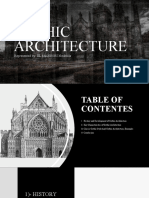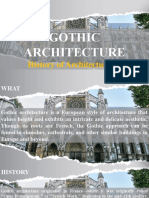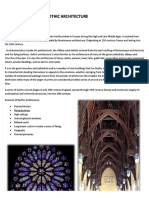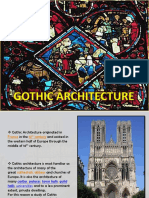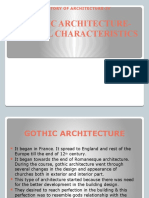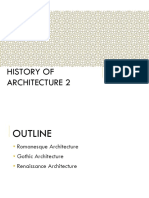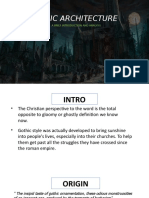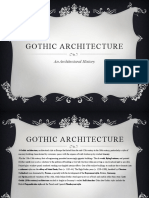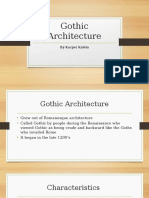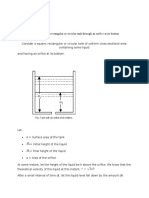0% found this document useful (0 votes)
72 views33 pagesGothic Architecture
Gothic architecture originated in France in the 12th century as an evolution of the Romanesque style. Key characteristics included pointed arches, ribbed vaults, flying buttresses, and large stained glass windows to let in more light. Gothic cathedrals like Notre Dame exemplified the style with immense structures supported by buttresses and filled with light through rose windows.
Uploaded by
Abegail MartinezCopyright
© © All Rights Reserved
We take content rights seriously. If you suspect this is your content, claim it here.
Available Formats
Download as PDF, TXT or read online on Scribd
0% found this document useful (0 votes)
72 views33 pagesGothic Architecture
Gothic architecture originated in France in the 12th century as an evolution of the Romanesque style. Key characteristics included pointed arches, ribbed vaults, flying buttresses, and large stained glass windows to let in more light. Gothic cathedrals like Notre Dame exemplified the style with immense structures supported by buttresses and filled with light through rose windows.
Uploaded by
Abegail MartinezCopyright
© © All Rights Reserved
We take content rights seriously. If you suspect this is your content, claim it here.
Available Formats
Download as PDF, TXT or read online on Scribd
/ 33






